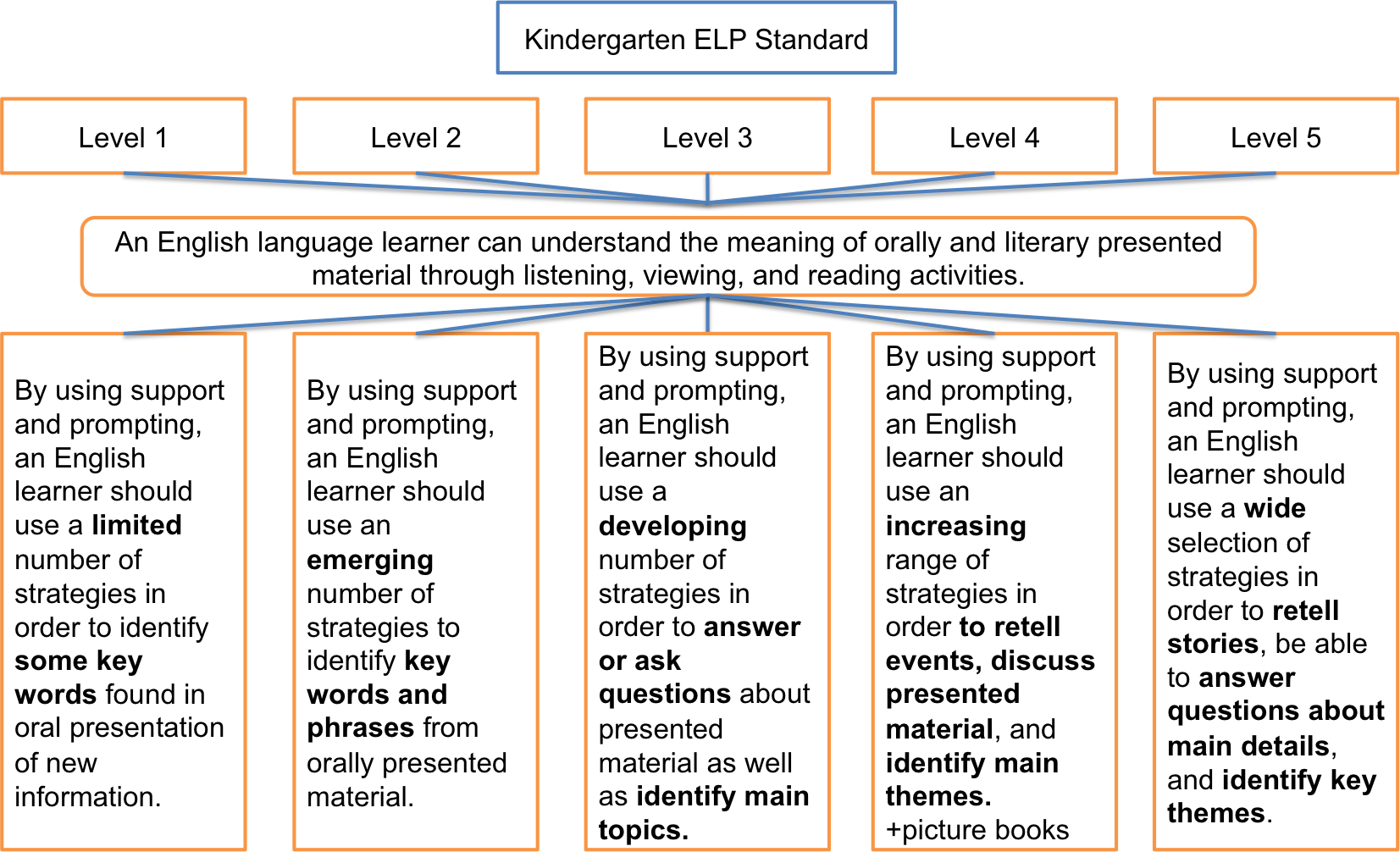Kindergarten English Language Proficiency Standard 1 is the primary standard that lays the foundation for the future students’ learning. As to the listening and speaking domain, the first level is limited to a small number of skills and strategies a student can use during learning (CCSSO, 2014). Therefore, the range of needs of English learners increases in accordance with the increase in their proficiency. After the learners’ proficiency in the level reaches the ‘proficient’ mark, then learners transfer to the next level (TESOL International Association, 2016).

Addressing the needs of students at various levels in the classroom is important for helping every learner reach and exceed the expected standards. However, one of the key implications is the fact that each English learner enters the classroom with a wide range of abilities, personalities, as well as learning styles. Thus, it is the duty of educators to make sure that all students are successful in meeting the standards, mandated by their programs. By using a differentiated set of instruction and education strategies, teachers will be able to help their students reach the standards and transfer to a higher level (Levy, 2008). It is important to develop an appropriate set of ELP standards for English learners at the kindergarten level in order to create a solid background for basic learning and the linguistic demands that will be expected from students in the future. The systemic implications for addressing the needs of students at various levels in a classroom are widespread; however, they are crucial for making sure that every language learner is able to fully realize his or her potential in acquiring English language.
An ELP kindergarten teacher should possess deep knowledge about the language students will learn, and help them grow and expand their knowledge. The domain of listening and speaking is very important at this stage since it encompasses a range of key skills and competencies students will use in other domains such as writing and reading. Furthermore, it is crucial to account for the changes in the number of skills and strategies English learners employ for identifying key themes and words or answer questions about the information they learned from oral presentations. This means that there is a large number of variables that educators should take into consideration in order to help kindergarten students develop key English learning skills.
References
CCSSO. (2014). English language proficiency (ELP) standards. Web.
Levy, H. (2008). Meeting the needs of all students through differentiated instruction: Helping every child reach and exceed standards. The Clearing House, 81(4), 161-164.
TESOL International Association. (2016). PreK-12 English language proficiency standards framework. Web.